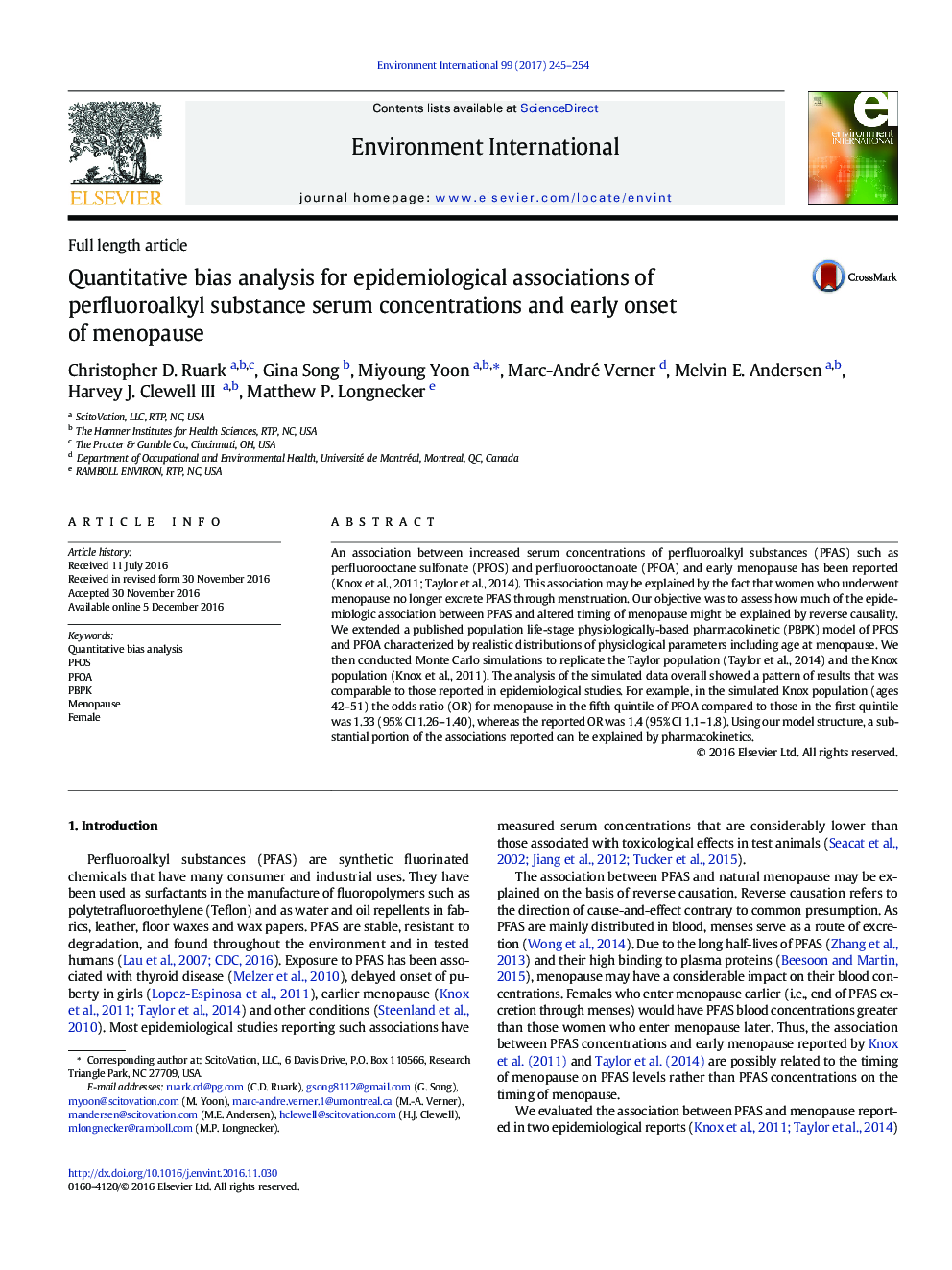| کد مقاله | کد نشریه | سال انتشار | مقاله انگلیسی | نسخه تمام متن |
|---|---|---|---|---|
| 5748416 | 1619031 | 2017 | 10 صفحه PDF | دانلود رایگان |
- Blood PFAS concentrations increase in menopausal women because of reduced loss in menses.
- The PFAS Monte Carlo PBPK model reproduces epidemiological population characteristics.
- Pharmacokinetics explain a substantial portion of the associations between serum PFAS and onset of menopause.
An association between increased serum concentrations of perfluoroalkyl substances (PFAS) such as perfluorooctane sulfonate (PFOS) and perfluorooctanoate (PFOA) and early menopause has been reported (Knox et al., 2011; Taylor et al., 2014). This association may be explained by the fact that women who underwent menopause no longer excrete PFAS through menstruation. Our objective was to assess how much of the epidemiologic association between PFAS and altered timing of menopause might be explained by reverse causality. We extended a published population life-stage physiologically-based pharmacokinetic (PBPK) model of PFOS and PFOA characterized by realistic distributions of physiological parameters including age at menopause. We then conducted Monte Carlo simulations to replicate the Taylor population (Taylor et al., 2014) and the Knox population (Knox et al., 2011). The analysis of the simulated data overall showed a pattern of results that was comparable to those reported in epidemiological studies. For example, in the simulated Knox population (ages 42-51) the odds ratio (OR) for menopause in the fifth quintile of PFOA compared to those in the first quintile was 1.33 (95% CI 1.26-1.40), whereas the reported OR was 1.4 (95% CI 1.1-1.8). Using our model structure, a substantial portion of the associations reported can be explained by pharmacokinetics.
71
Journal: Environment International - Volume 99, February 2017, Pages 245-254
